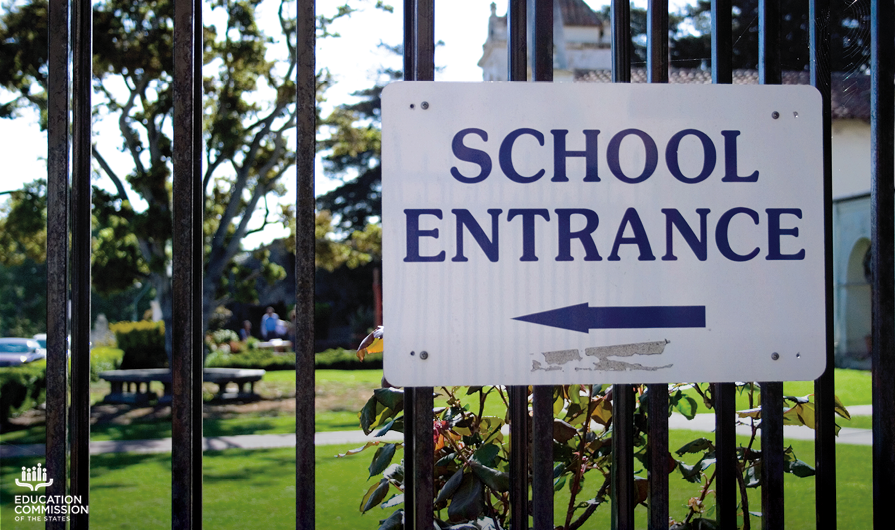In response to school shootings and other incidents of school violence, state policymakers have sought to protect students and improve school safety through steady legislative interest over the last several years.
According to our policy tracking tool, states have introduced hundreds of bills related to K-12 school safety each year. Twenty-nine bills were enacted in 2020, 50 bills in 2021 and 36 bills so far in 2022. Some have been omnibus school safety bills (like in Colorado or Florida) that cover many topics. Others have been more narrowly focused and address issues like guns in schools, school resource officers, hardening of facilities, or emergency preparedness procedures and resources.
Our recently updated 50-State Comparison on K-12 School Safety covers policies across each of these issue areas. Between these policies and recent legislation, we found several emerging approaches and ongoing trends in state policy responses to school safety.
We’ve seen a growing number of states require the inclusion of law enforcement in aspects of school safety, including conducting school safety drills (17 states), creating district or school safety plans (30 states) or completing audits of school facilities (35 states). Compared to our last update, more states are moving in that direction:
-
- Florida — H.B. 1421 (2022) requires law enforcement officers to be present and involved in active assailant drills.
-
- Virginia — H.B. 1129 (2022) requires schools to collaborate with the chief law enforcement officer of the locality on school safety audits.
Forty-five states require schools to conduct safety drills in statute or regulation, and others require drills in state guidance or handbooks. An emerging trend, particularly pertaining to active shooter drills, is requiring safety drills to be age and developmentally appropriate:
-
- Illinois — H.B. 2400 (2021) requires advanced announcement of lockdown drills to students and staff and prohibits active shooter simulations that mimic a real event.
-
- Washington — H.B. 1941 (2022) prescribes the kind of active shooter drills that can be practiced with students. It prohibits live simulations of active shooter scenarios that are not trauma-informed and age and developmentally appropriate.
An increasing number of states have established school safety centers to help districts and schools implement required safety legislation. This latest version of our 50-State Comparison added a data point looking at states that have established a school safety entity, office or board.
While our 50-State Comparison looks specifically at safety audits of school facilities, some states have policies implementing more general safety audits. These audits look beyond physical security to examine other procedures and resources schools have in place.
-
- Pennsylvania — S.B. 1142 (2018) requires the School Safety and Security Committee to establish criteria for best practices for conducting safety assessments, including criteria for a physical assessment, policy and training assessment, and a student assistance and behavioral health assessment.
To better understand the roles of school resource officers or other school security positions across states, we added data points about the roles and responsibilities of school resource officers and their specific training requirements. States are beginning to explicitly define and add requirements in recent legislation:
-
- Maine — S.P. 330 (2021) requires school resource officers to complete diversity, equity and inclusion training or implicit bias training at least once during the officer’s first year of employment.
- Virginia — H.B. 1419 (2020) modifies training requirements for school resource officers to include instruction on: school and personal liability issues; mediation and conflict resolution including de-escalation; awareness of cultural diversity and implicit bias; working with students with disabilities, mental health needs, substance abuse disorders or past traumatic experiences; and student behavioral dynamics.
As of October, 35 school shootings have resulted in injuries or deaths in 2022, which is a record high according to Education Week. In response, policymakers will continue to grapple with these complex safety issues to make schools safer from internal and external threats.














